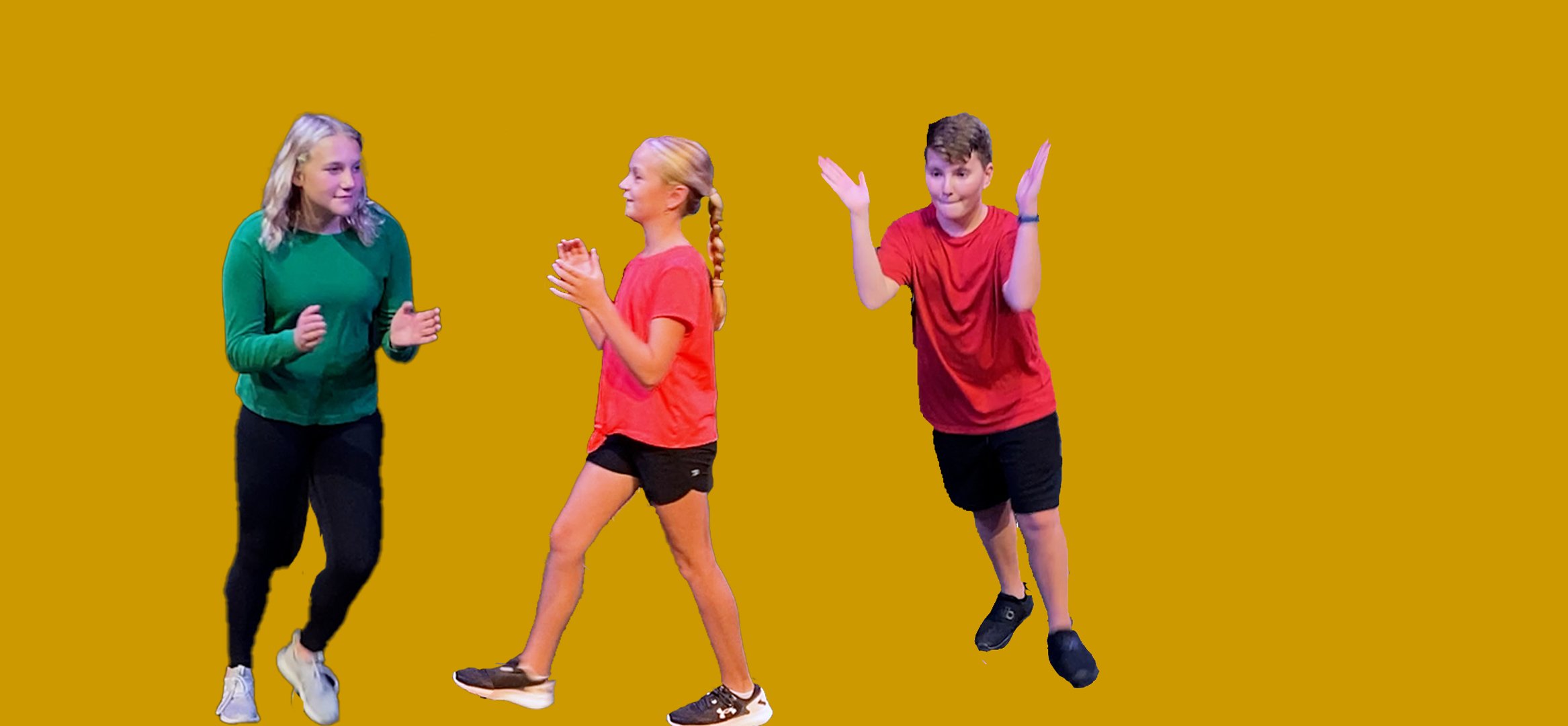Games Organized By Core Concept
(You can reach the games organized alphabetically by clicking on the words:
GAMES ORGANIZED ALPHABETICALLY.)
SEARCH FOR A GAME BY SCROLLING THROUGH THE PICTURES BELOW. THEN CLICK ON THE PICTURE FOR DETAILED INSTRUCTIONS AND A DEMONSTRATION VIDEO.
YOU CAN ALSO SKIP DIRECTLY TO A CONCEPT AREA BY CLICKING ON THE NAME OF THE CORE CONCEPT IN THE FOLLOWING LIST:
WARMUPS: An actors tools of the trade are their bodies and their voices. Make sure they’re ready to go!
BODY AWARENESS AND VOCAL PROJECTION: Knowing how to stand and move appropriately on stage to convey character, and knowing how to speak and be heard.
STAGE CONVENTIONS AND TECHNIQUES: Knowing basic stage vocabulary, and knowing how to stand and move on stage so you and others can be seen.
CONCENTRATION AND LISTENING: Knowing how to focus on the task and hand, and how to be “in the moment”—listening and responding spontaneously to others on stage.
COMMITMENT: Knowing how to give yourself fully to your character and your character’s action, and how to perform with energy.
TEAMWORK: Knowing how to cooperate and work as an ensemble.
CHARACTER: Knowing techniques to create an interesting and convincing character appropriate for the role you are playing.
MOTIVATION: Knowing how motivations and objectives shape the movement and speech of a character.
IMAGINATION: Knowing how to bring creativity to your choices as an actor, and knowing how to envision an environment in order to react to it in character.
STORY: Knowing how to recognize and create narratives that have a beginning, a middle, and an end.
Warm-ups
TEXAS SHAKEDOWN
An energizing physical warm-up.
Body Awareness and Vocal Projection Exercises
Stage Conventions and Techniques
Concentration and Listening Exercises
CONCENTRATION CLAPS
A concentration game played in a circle requiring precise rhythm and rapid response.
CONCENTRATION POINT
A very simple concentration exercise that stresses focus and listening.
COUNT TO TEN
With eyes closed, students count to ten as a group with only one student speaking at a time.
Commitment Exercises
Teamwork Exercises
COUNT TO TEN
With eyes closed, students count to ten as a group with only one student speaking at a time.
FAIRY TALE TABLEAUX
Actors create three tableaux to capture the beginning, middle, and end of a fairy tale.
MACHINE
Actors work together to create a single machine with mechanical movements and sounds.
Character Exercises
SLEEPY COWBOY
Actors create a character based on a single adjective and a randomly assigned vocation.
WALK THIS WAY
Actors practice moving as specific characters named by the game leader.
Imagination Games
Motivation Exercises
Story Games
Curtains Up Curriculum by Friends of the Groom Theater Co. is licensed under a
Creative Commons Attribution-NonCommercial-ShareAlike 4.0 International License. Curtains Up is a training program designed for young actors sponsored by Friends of the Groom Theater Company.
It is available to the general public for free under the terms of the Creative Commons License above.
TO REACH THE FRIENDS OF THE GROOM WEBSITE, CLICK ON THE LOGO BELOW.






























































